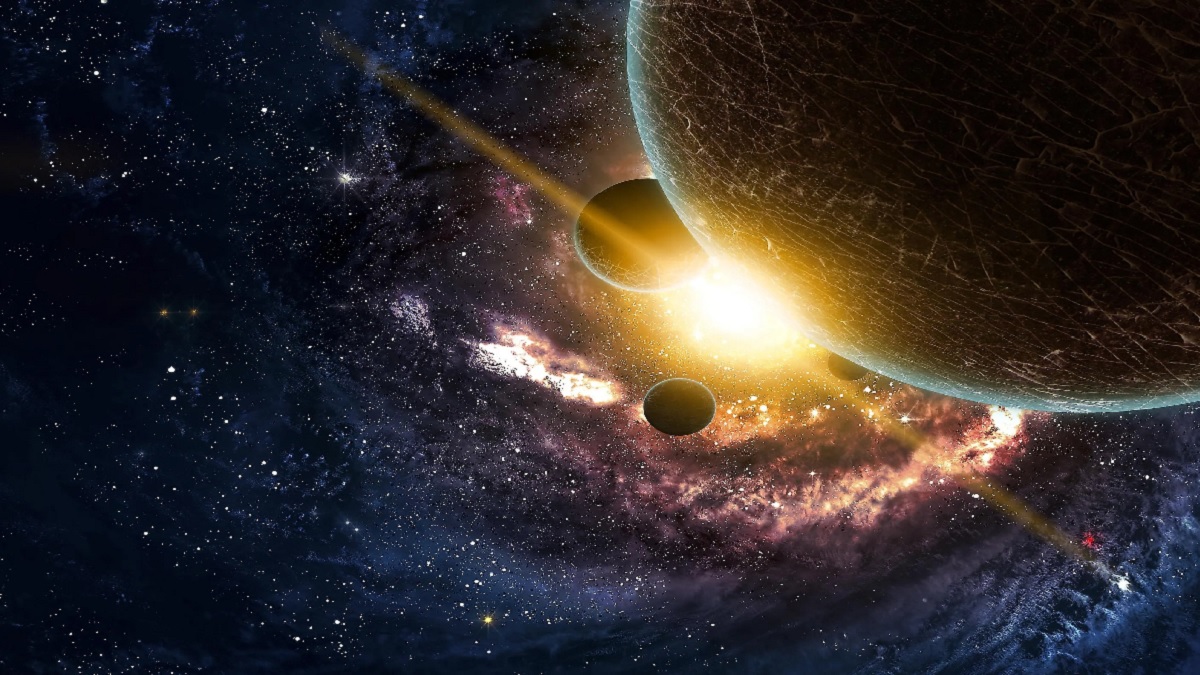If you ever take a walk along the countryside, you may witness an aesthetic view of bedazzling heavenly bodies that are dispersed like pearls on a black canvas. While you are caught by this ravishing sight, have you ever contemplate the nature of these luminous celestial objects? The sky harbours the constellation of astronomical bodies, including stars and planets that become discernible at night, but how to differentiate between stars and planets? This blog aims at shedding light on the distinguishing features of these two.
Characteristics of Stars
Stars are huge luminous celestial objects that often appear as fix points of light in the sky. Stars are made up by the nuclear fusion of the hydrogen to form helium and due to ongoing nuclear reactions Stars have high temperature and they radiate light and heat. Sun is one of the largest and closest stars to Earth with a distance of 93,000,000 miles. There are many other stars, but due to their immense distance from Earth they appear as fix spots of light.
Colours of stars can help us in determining their temperature. For instance, hot stars are white or blue, whereas cooler stars have orange or red hues. It has not been determined yet that how many stars exist in the universe, but according to astronomers there are nearly 400 billion stars in our milky way galaxy alone.
Read More: Cosmology: The Study Of Universe – About Pakistan
What are Planets?
A planet is a large celestial object orbiting a star. It is massive enough to have gravity that forces it into a spherical shape and it is big enough that its gravity clear away anything of similar size near its orbit around the sun. Our solar system has eight planets, namely Mercury, Venus, Earth, Mars, Jupiter, Saturn, Uranus and Neptune. First four planets are made up of rocks with inner cores composed of metals. These four planets are called as rocky planets. While the other four planets are made up of gasses like hydrogen and methane and are called gas giants.
They are called so due to their larger size than the first four planets. A planet does not have its own light, rather it reflects light from the stars. All the planets rotate around their own axis and revolve in an orbit around the sun, simultaneously. Earlier till 2006, it was believed that there were nine planets in our solar system, but later Pluto was excluded from the planets list when international astronomical Union gave a new definition for the planet according to which a planet must have three characteristics as given below:
- It must revolve around a star
- Must be huge enough to assume a spherical shape
- Must have enough gravity to clear away any other astronomical objects like asteroids, rocks and comets near its orbit around the sun.
So according to this criteria Pluto didn’t fulfil the last condition as comets like objects clutter around its orbit. It is now termed as a dwarf planet.
Difference Between a Star and a Planet
Stars and planets are two entirely different entities. They have their own distinctive features which marks a clear line between the two. These are some common differences between stars and planets.
| Stars | Planets |
| Stars are huge balls of gasses mainly composed of matter like hydrogen and helium | Planets are large celestial objects which have matter like solid, liquid, gas or a combination of all. |
| Stars emit light of their own due to the continuous nuclear reactions going on in the stars | Planets do not have light of their own, rather they reflect light from stars. In our solar system planets mainly reflect light from the sun |
| Stars do not revolve in an orbit so they are perceived as fixed points of energy. | Planets revolve in an orbit around a star ,in our solar system planets are revolving around the sun. |
| A star have very high temperature due to the thermonuclear fusion occurring at its core. | Planets have low temperature and their temperature is mostly associated with the nearest star. |
| Stars change their positions relative to other stars that is why it is seen after very long time. | Planets change their position frequently as they spin in their own axis as well as revolve around the star so change in their position is very much obvious. |
| Stars exhibit a twinkling effect at night as they emit their own light. | Planets do not twinkle since they only reflect light from the stars. |
| Stars are comparatively larger than the planets. | Planets are smaller in size than stars. |
| There is only one star in our solar system | There are eight planets in our solar system |
| Stars move at a higher Speed in comparison to planets. | Planets move comparatively at a lower speed. |
| Stars do not have a definite shape as they are not solids and only gasses do not mostly have a constant shape but they appear as dot shaped. | Planets have a definite spheroid shape. |
Read More: Countries With The Cheapest Internet In The World – About Pakistan
Conclusion
Astronomers are still struggling to discover more about the stars and the planets. There are certain questions which are centre of debate such as if a star can turn into a planet, many theories have been developed to support the argument, but they are too vague to be endorsed. Similarly, astronomers are working really hard to discover life on any other planet which is yet to be explored in a wider prospect. With further advancement in astronomy we can look forward to unearth more distinguishing features between stars and planets and other mysteries of the universe.

















